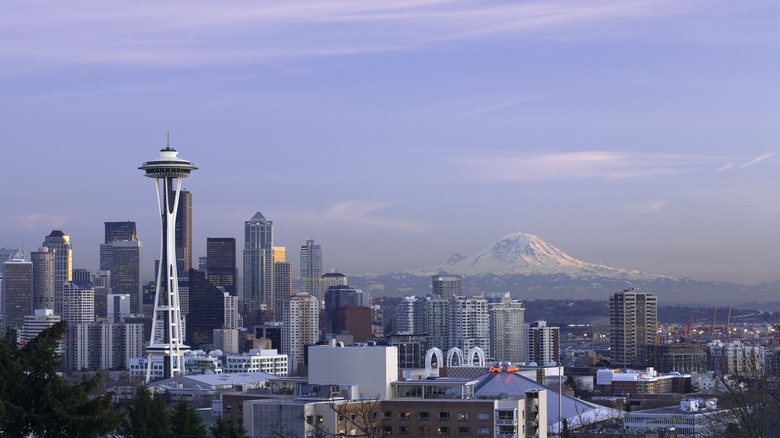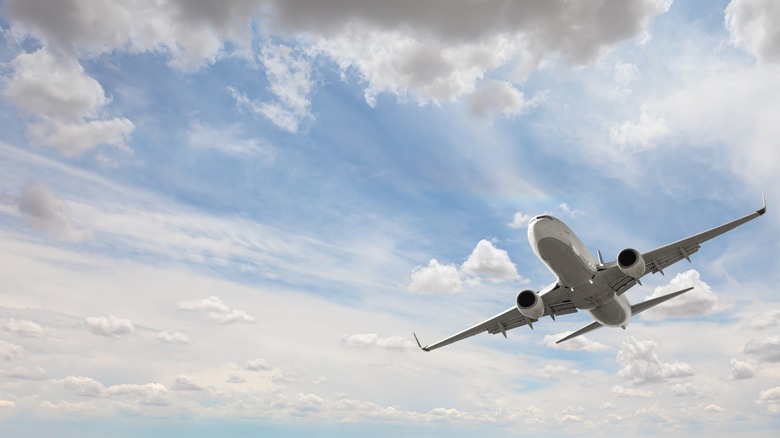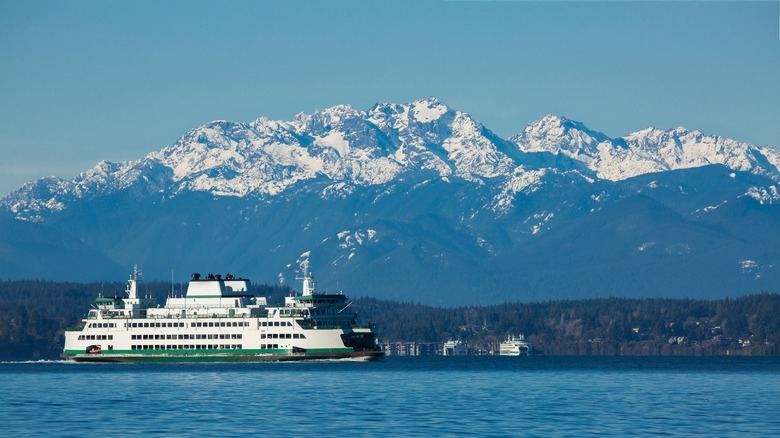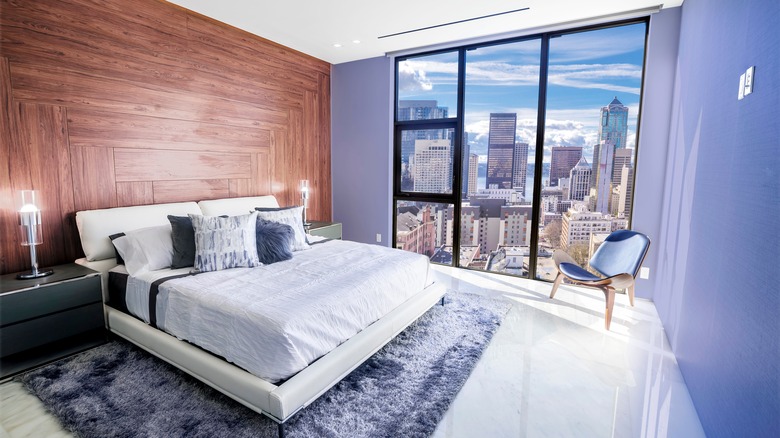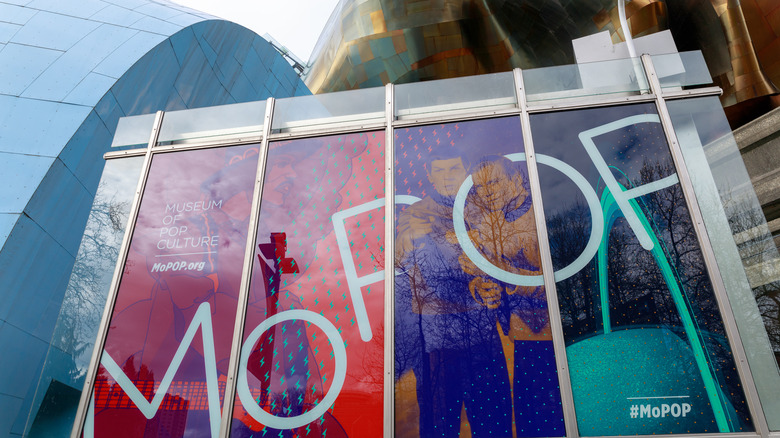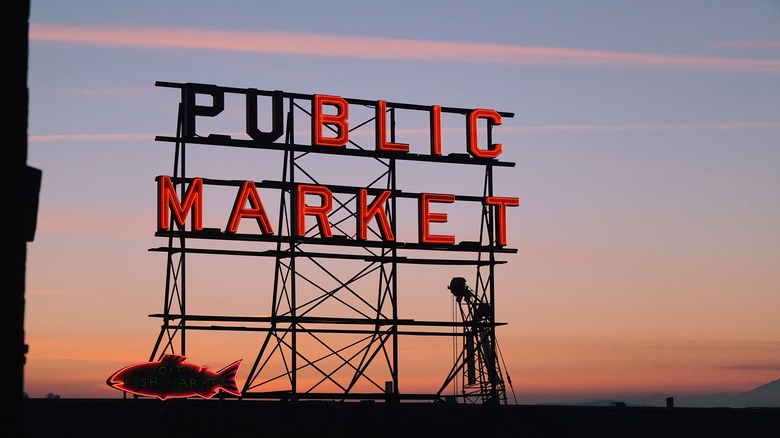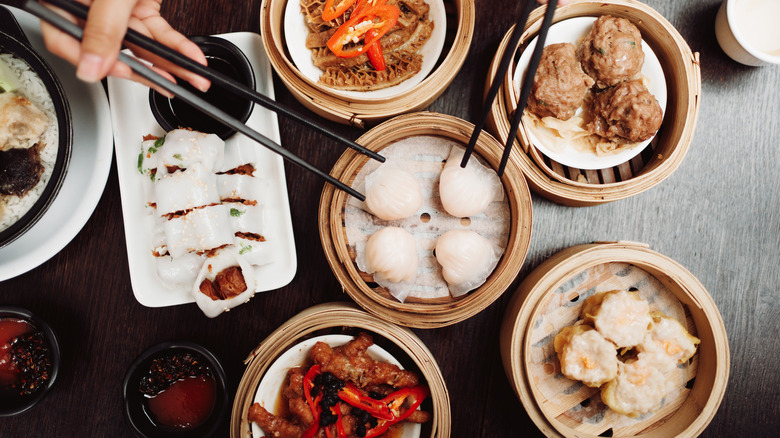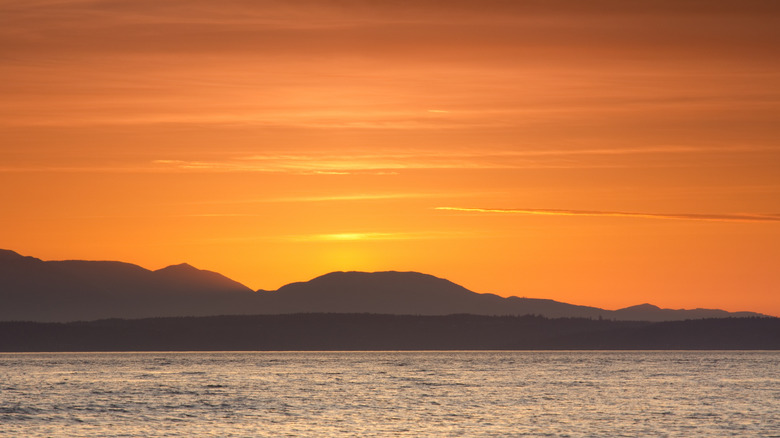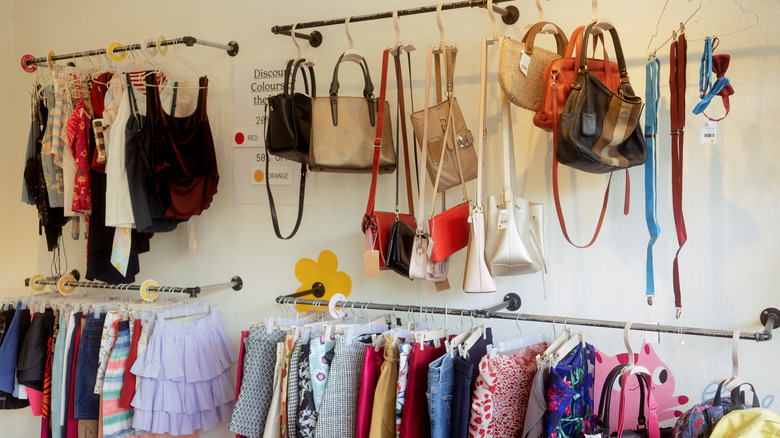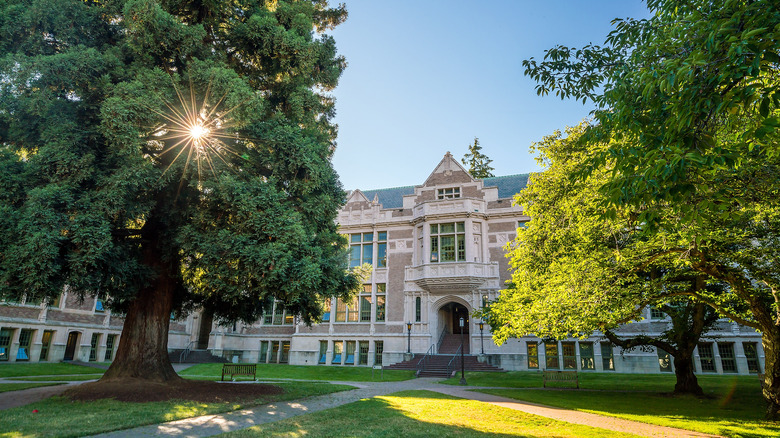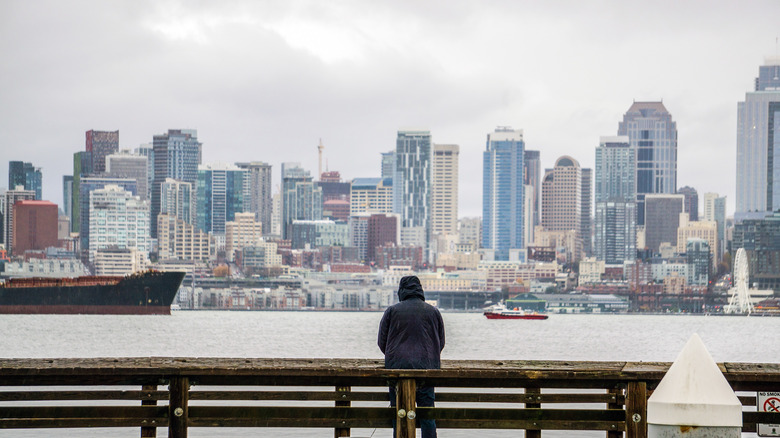How To Visit Seattle On A Budget
We may be a bit biased, but in addition to being one of the best cities in the U.S., Seattle is also an excellent place to visit on a budget. It has a bit of everything: multiple bodies of water, mountain views, plenty of green space, cute bars, cafes, and of course, a hint of Pacific Northwest weirdness that gives the city its unique character. And, despite its large size, (there are 3 million inhabitants in the greater metro area), it doesn't have the big city vibe of New York or Chicago. This can be quite beneficial if you're looking for a bit of a different trip or to save some cash. In bigger metropolises like London or LA, it often feels like you spend a minimum of $30 as soon as you walk out the door. And while Seattle does offer some more pricy activities, it's also a wonderful destination for those looking to spend less and still have a great trip.
Like the Pacific Northwest region as a whole, Seattle embraces the outdoors. If you're willing to embrace the less-than-ideal weather, there's a ton of free sights and activities to see during your stay. From parks, waterfront spaces, outdoor markets, and cheap eats, you can easily enjoy the Emerald City on a budget.
Look for flight deals
Before you start planning what to do and how you will save money while visiting Seattle, you need to get there first. Alaska Airlines is headquartered in the Emerald City and the airline frequently runs promos between Seattle and other cities around the U.S. Depending on where your home city is and what time of year you book, you could snag a roundtrip flight for under $100. Sign up for their email list to be the first to find out if your home airport has a route on sale. If arriving from outside the U.S., check one of Alaska's partner airlines,such as Aer Lingus and Icelandair, which often have cheaper offers than other European carriers. Just note you'll just be required to have layovers in Dublin or Reykjavik respectively. Other international Alaska Airline partners include LATAM, Singapore Air, and Korean Air.
Additionally, keep in mind that as of 2019, the greater Seattle area has two airports with passenger terminals. Seattle-Tacoma International Airport (Sea-Tac), is the largest in the state and the main port of arrival for visitors. The majority of flight deals are connected to Sea-Tac and if you're arriving from an international destination, it's your only option. However, if flying domestically, particularly from a city on the west coast, you also have the option of flying into Everett-Paine Field. Located 30 minutes north of Seattle, this is a good option if you come across a can't-beat deal or if you have friends and family who live close by. Outside of these scenarios, however, it's probably better to fly into Sea-Tac as it is nearer the city and has more public transport connections.
Skip the car rental
If you fly into Sea-Tac and plan to keep your visit exclusively within the Seattle city limits, you won't need to rent a car. This alone will save you a ton of money, not just on the rental cost, but on insurance, gas, and parking. And trust us, you won't want to deal with Seattle traffic and parking anyway. Instead, stick to public transportation.
From the Link light rail to numerous bus lines and ferry boats, there are plenty of budget-friendly options to get you around the city. You can purchase an Orca card and use it on all forms of transportation including light rail, commuter rail (the Sounder), bus lines, and passenger ferries. We recommend buying your Orca card immediately upon arriving at SeaTac. From the arrivals hall, follow the signs for the Link light rail, and you'll find kiosks dispensing the cards right in the station. From there, you can load some cash on your transit card and take the train right into the city. That same card can be used to get you around for the duration for your trip. If you plan to visit multiple destinations in a single day, it's best to consider buying an $8 day pass, which gives you unlimited trips in a 24-hour period. This will save you money, as most transit trips cost between $3 and $5 dollars each way.
Budget accommodation
Seattle isn't an affordable city to live in or visit when it comes to a place to stay, but there are some gems, especially if you consider alternative neighborhoods. Sure, everyone wants to have a Space Needle or Puget Sound view, but that isn't exactly practical if traveling on a budget. However, renting an Airbnb or hotel in lesser-known areas can be a great way to save money while still getting a feel for the city. The Central District is, as its name suggests centrally located and very accessible via bus or light rail. It's quite close to downtown and still maintains an urban neighborhood feel with numerous cafes and bars on each corner. Mount Baker is another favorite location, as is West Seattle; the latter will require a water taxi commute into the city center, but that could be a fun way to experience the city. Finally, with the expansion of the light rail, Northgate is another great option for a home base during your trip that won't require a car to access Seattle's popular attractions.
If you insist on staying in more popular (and usually expensive) neighborhoods, there are still a handful of relatively budget-friendly options. The MarQueen in the heart of downtown has rooms for around $120 to $140 a night, depending on the season. Meanwhile, The Ballard Inn offers rooms for around $140 per night in a much sought-after part of the city, for visitors and locals alike. And if you want the backpacker experience, the Green Tortoise Hostel at Pike Place has been an institution for decades and offers competitive rates of around $60 a night for a bunk in a dorm.
Get the Seattle CityPASS
Like many cities around the world, Seattle has embraced the CityPASS life. This is the most affordable option if you plan to visit two or more main attractions in town. The pass costs $119 for adults and $89 for children and is valid for nine days, which makes it a great option for both weekend visits and longer trips. That may sound like a hefty sum of cash for a "budget trip," but compared to what individual attractions cost, the pass is a steal.
Each Seattle CityPASS includes both a visit to the Space Needle and Seattle Aquarium, which normally cost $35-$39 and $30-$39, respectively, for a single ticket depending on the time you visit. But, in addition to these two attractions, the pass grants you the choice of visiting three of the following locations: the Museum of Pop Culture (MoPOP), Woodland Park Zoo, Chihuly Garden and Glass, and/or taking an Argosy Harbor Cruise.
As a note, MoPOP can cost between $25 and $30, the zoo $27, and an argosy cruise, $39. So even if you pick the cheapest day and time for visiting the Space Needle, aquarium, and MoPOP, it all adds up to $129 versus the pass at $119 (which also allows you to skip ticket lines.) You don't even have to decide which of the three you want to include at the time of purchase. The pass will just cease to work once you've used it at three places.
Free activities
If you have more time to spend in the city, you'll probably want to hit up more than just the top five tourist attractions. Luckily, Seattle is full of free stuff to do and if you pack a picnic, you could have a full day without spending a penny outside of transportation costs. In fact, one of the main attractions in town, Pike Place Market, doesn't cost anything to visit. Of course, you may still inevitably spend something at the numerous stalls serving up aromatic coffee, fresh produce, as well as treats from around the world. But it doesn't cost anything to window shop.
Right next door to Pike Place is the recently revamped Seattle waterfront, a great place to wander free of cost. If you're looking to take in some art and history, there are some museums in town that offer free visits on certain days of the month. The Burke Museum of Natural History on the University of Washington campus offers free entry on the first Thursday of every month. Meanwhile, the Center for Contemporary Art, Duwamish Longhouse and Cultural Center, and Frye Art Museum are all free to enter at all hours and days of the week. Finally, the famous Seattle Art Museum is free to all students on Sundays and the first Thursday of each month. Note that a valid student I.D. is required for entry.
Cheap places to eat
Seattle is a foodie city, but not one where you have to drop at least three figures to enjoy a good meal. Sure the likes of Canlis and The Pink Door will cost a pretty penny, but these aren't the only places where you'll find mouthwatering meals. As already mentioned, Pike Place is a fantastic free "activity" in the city, but it's also home to a bunch of awesome cheap eats. Pirosky Pirosky is a must-visit institution in Seattle, offering visitors the chance to sample traditional piroshki of the meat and cheese variety, as well as fun creations like cranberry and cinnamon apple. Additionally, Pike Place is home to a few superb dumpling spots including the Seattle Dumpling Company and Mee Sum Pastry.
This may come as a shock, but the one thing we don't recommend you purchase at Pike Place is Seafood! The well-known Pike Place Fish (where they throw fish to customers) is fun to visit. And the product is high-quality, but you can find just as good (if not better) seafood for much cheaper elsewhere in the city. Plus, what you can purchase at Pike Place is fresh, which means you'll need to cook it yourself. Unless you're staying in town for a while, try Elliot's Oyster House instead. If you have more than a day to fill with affordable snacks, head to the International and University Districts for Asian eats. When in doubt, head to any teriyaki, pho, or Thai restaurant for guaranteed satisfaction at an affordable price!
Embrace the outdoors and green space
The Pacific Northwest has a reputation for being home to outstanding nature, and you don't even need to leave the Seattle city limits to enjoy it! There are numerous parks that offer a respite from the hustle and bustle of the city. In Capitol Hill, the epitome of city center busyness, you'll find tranquil Volunteer Park. Inside this space, you'll find numerous trails, playgrounds for kids, and sneaky views of the Space Needle. A bit further away, between Magnolia and the U-district is the Washington Park Arboretum. Miles of trails run through this mini-forest as do numerous boardwalks along Lake Union. Back in the heart of the city, the smaller Kerry Park makes a nice place to relax. The park is best enjoyed later in the day as it's a top sunset spot in the city. And of course, we can't forget the iconic Gas Works, boasting another great view of the Seattle skyline.
If you're craving beach time, no need to head to the coast. The Ballard neighborhood has you covered! The most popular spot to suntan is Golden Gardens, named for the sunny sand that graces its shores (a rarity in a region where rocky beaches are the norm.) A bit further away, Carkeek is a wonderful beach to spend an afternoon, offering many trails for you to explore alongside the sand. Finally, Discovery Park –the largest park in the city limits — provides great water views as does Alki Beach in West Seattle. The latter is a quick water taxi away from downtown.
Thrift and outlet shop while visiting
Seattle artist Macklemore wrote a song about thrifting for a reason, as the secondhand scene here is quite good. Budget trips don't always leave a lot of room for shopping sprees, but if you still want to do a bit, you can do so on the cheap if you stick to previously-owned goods. The Goodwill in Ballard always has a donation line that blocks the main street, meaning you'll find plenty of options as a shopper. Additionally, the Buffalo Exchange has been buying and selling the latest youthful trends for years. If you want a high-density neighborhood with plenty of independently owned thrift shops, bookstores, and other odds and ends, head to Capitol Hill.
Additionally, there are also some great outlet stores if you can make it out to the suburbs or shopping malls. Northgate is accessible via the light rail, as is Southcenter Mall south of the city. Major outlets can be found in Tulalip (a bit further south than Southcenter) and Marysville (north of Everett), although both are difficult to access via public transportation.
Hangout around the university neighborhoods
Seattle is home to many universities and colleges, such as the University of Washington, Seattle University, Cornish College of the Arts, Central Seattle College, and Seattle Pacific University. Thus, the population tends to skew young, and if you visit neighborhoods where these institutions are located and where students live you'll benefit from student-friendly prices.
Across the U-district, Capitol Hill, and Fremont, you'll find plenty of affordable places to eat, regardless of whether you own a student ID card. On top of that, near these student-heavy neighborhoods, you can always count on there being a festival, market, or performance, on any given day of the week. These events are often put on by the local schools and are usually free or very reduced cost to attend for students. Check out community Facebook pages, Eventbrite, or the university or college's website to see what's going on during your visit.
Use Meetup
Meetup is an app typically used by those who have relocated and are looking to make friends with similar interests. Depending on the city, it can also be a fantastic resource for travelers as it is a treasure trove of activities and social outings. Instead of wandering town hoping to find "the" spot where everyone hangs out, why not go to an event specifically targeted to people who have the same idea of fun as you? Whether you want to bond over your love of coffee or a shared hobby like knitting or surfing, Meetup has you covered.
And for those of you visiting Seattle, you're in extra luck, as the app is extremely popular in this city. Seattleites don't have the most open reputation (anyone heard of the "Seattle Freeze?") and thus transplants are constantly organizing events to try and overcome the issue. Outings are usually free (park meet up, bring your own drink, etc.), pay what you want (only pay for the beers you drink, etc.), or affordable. So it's a really good idea for travelers on a budget in the PNW. Check out the Seattle Meetup page.
Consider off-season travel
As with the majority of destinations around the world, one of the best ways to save a bit of cash on any trip to Seattle is to visit during the off-season. Sure, there are numerous reasons summertime is the most popular season to visit. It's when the temperatures are their best — usually an average of mid-70s to mid-80s, much more bearable than a lot of the U.S. in July and August. Additionally, the city's location so far north means the warmer months also come with extremely long days. It's when we can enjoy the reward for enduring months of rain and gray when the sun sets before 5 pm.
However, if you want to save money consider visiting outside of June – September. Visiting outside of summer also comes with the benefit of avoiding crowds. And while the weather may not be perfect, it's far from Minnesota in winter! Fall can still have lovely temperatures, not too much rain, and brilliant fall foliage. Spring is also beautiful and comes with the added bonus of being tulip season in the Skagit Valley and cherry blossom season at the UW Quad. Finally, if shorter days and a bit of gray don't scare you, winter can be a great time to find flight and accommodation deals in Seattle. And unlike a lot of the country, it's unlikely you'll encounter snow during your winter getaway here, although not impossible!
